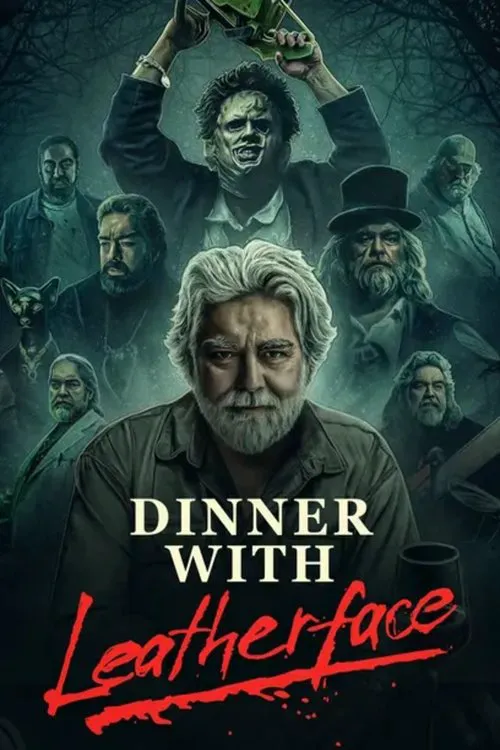Dinner with Leatherface

Plot
Dinner with Leatherface is a documentary film that pays tribute to the life and career of Gunnar Hansen, a multifaceted individual who left an indelible mark on the horror genre. Hansen is perhaps most famously known for his iconic portrayal of Leatherface in the 1974 cult classic, The Texas Chainsaw Massacre, a film that revolutionized the horror film genre and spawned a franchise that would endure for decades. Throughout the documentary, Hansen is showcased through various interviews with friends, colleagues, and fellow industry professionals, providing a nuanced and intimate portrait of a man often shrouded in the darkness of the horror genre. However, as the interviews progress, it becomes clear that Hansen was, in fact, one of the most kind-hearted and affable individuals in the industry. Director David Gregory and other filmmakers, including Jim Murphy, shed light on Hansen's unique talent and his commitment to his craft. Hansen's work as a poet and author is also highlighted, showcasing his ability to weave complex narratives and evoke vivid imagery through his written word. His dedication to his passions and his willingness to take on eclectic projects demonstrate a level of creative diversity that is both impressive and rare. Several actors who worked alongside Hansen in various films and projects, including some of the casts of the Texas Chainsaw Massacre sequels, share their fond memories of working with him. They paint a picture of a humble, dedicated individual who inspired loyalty and admiration among those around him. Hansen's collaborations with other filmmakers and actors often resulted in genuine creative partnerships, a testament to his ability to form meaningful connections with others. Hansen's influence on the horror genre cannot be overstated. His iconic portrayal of Leatherface not only helped to define a new era of horror filmmaking but also paved the way for a legion of genre fans. Despite the fame and recognition that came with his role as Leatherface, Hansen remained humble and grounded, often choosing to focus on more personal projects and collaborations. In addition to its exploration of Hansen's life and career, the documentary also touches on the enduring legacy of The Texas Chainsaw Massacre. Released in 1974, the film is often cited as one of the most influential horror movies of all time, with its raw, unflinching portrayal of violence and terror helping to redefine the boundaries of the genre. The Texas Chainsaw Massacre was banned in several countries and sparked widespread controversy, but its impact on popular culture cannot be denied. Despite his association with a film that helped to define the boundaries of the horror genre, Hansen was a devoted family man who cherished his time spent with loved ones. His love for his family and his deep connections with friends and colleagues are palpable throughout the documentary, providing a poignant counterpoint to the often darker themes associated with the horror genre. The film also touches upon Hansen's more personal struggles, including his experiences with cancer and the challenges that came with living with the physical aftermath of a severe brain injury. Through these challenges and setbacks, Hansen emerged as an even more resilient and compassionate individual, one who inspired others through his determination and unwavering commitment to his passions. Throughout its runtime, Dinner with Leatherface provides a nuanced and compassionate portrait of Gunnar Hansen, an individual often overlooked in favor of the more macabre aspects of the horror genre. Through his collaborations, his passions, and his influence on popular culture, Hansen's legacy as a multifaceted artist, author, filmmaker, and actor is finally given the recognition it deserves.
Reviews
Recommendations



